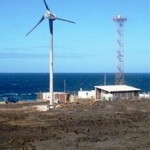
Cancun / Geneva – The year 2010 is almost certain to rank in the top 3 warmest years since the beginning of instrumental climate records in 1850, according to data sources compiled by the World Meteorological Organization (WMO). The global combined sea surface and land surface air temperature for 2010 (January–October) is currently estimated at 0.55°C ± 0.11°C[1] (0.99°F ± 0.20°F) above the 1961–1990 annual average of 14.00°C/57.2°F. At present, 2010’s nominal value is the highest on record, just ahead of 1998 (January-October anomaly +0.53°C) and 2005 (0.52°C)[2]. The ERA-Interim[3] re-analysis data are also indicating that January-October 2010 temperatures are near record levels. The final ranking of 2010 will not become clear until November and December data are analyzed in early 2011. Preliminary operational data from 1-25 November indicate that global temperatures from November 2010 are similar to those observed in November 2005, indicating that global temperatures for 2010 are continuing to track near record levels.
Over the ten years from 2001 to 2010, global temperatures have averaged 0.46°C above the 1961-1990 average, 0.03°C above the 2000-09 average and the highest value ever recorded for a 10-year period. Recent warming has been especially strong in Africa, parts of Asia, and parts of the Arctic; the Saharan/Arabian, East African, Central Asian and Greenland/Arctic Canada sub-regions have all had 2001-10 temperatures 1.2 to 1.4°C above the long-term average, and 0.7°C to 0.9°C warmer than any previous decade.
Surface air temperatures over land were above normal across most parts of the world. The most extreme warm anomalies occurred in two major regions. The first extended across most of Canada and Greenland, with mean annual temperatures 3°C or more above normal in parts of west Greenland and the eastern Canadian Arctic and sub-Arctic. The second covered most of the northern half of Africa and south Asia, extending as far east as the western half of China, with annual temperatures 1 to 3°C above normal over most of the region. Many parts of both regions had their warmest year on record, including large parts of northern Africa, the Arabian Peninsula and southwest Asia (with Turkey and Tunisia having their warmest year on record), as well as much of the Canadian Arctic and coastal Greenland. Four of the five sub-regions[4], which are wholly or partly in Africa (West and Southern Africa, the Saharan/Arabian region and the Mediterranean), are on course for their warmest year on record, along with South and Central Asia, and Greenland/Arctic Canada. Temperatures averaged over Canada have also been the highest on record.
Only limited land areas had below-normal temperatures in 2010, the most notable being parts of western and central Siberia in Russia, parts of southern South America, interior Australia, parts of northern and western Europe, eastern China and the south-east United States. It was the coolest year since 1996 for the northern European region, and since 1998 for northern Asia, due mainly to below-normal temperatures during the winter. A number of northern European countries are also likely to have their coolest year since 1996, including the United Kingdom, Germany, France and Norway.
Sea surface temperatures were below normal over most of the eastern half of the Pacific Ocean as a result of the La Niña event which developed during the year, but were well above normal over most parts of the Indian and Atlantic Oceans. The tropical North Atlantic was especially warm with temperatures at record levels over most of the area east of longitude 55°W.
Major Regional Climate Events in 2010

Extreme Asian Summer Monsoon in Some Regions
Pakistan experienced the worst flooding in its history as a result of exceptionally heavy monsoon rains. The event principally responsible for the floods occurred from 26-29 July, when four-day rainfall totals exceeded 300 millimetres over a large area of northern Pakistan centered on Peshawar. There were additional heavy rains further south from 2-8 August which reinforced the flooding. More than 1500 lives were lost, and over 20 million people were displaced as large parts of Pakistan’s agricultural land were inundated. In terms of the number of people affected, the United Nations rated the flood as the greatest humanitarian crisis in recent history. The total monsoon season rainfall for Pakistan was the fourth-highest on record and the highest since 1994.
Summer rainfall was also well above normal in western India, and China experienced its most significant monsoon flooding since 1998, with south-eastern China and parts of the north-east most severely affected. The latter floods also extended to the Korean Peninsula. A number of these floods led to significant loss of life, directly as well as through landslides in China, which claimed more than 1400 lives in Gansu Province. However, monsoon season rainfall averaged over India was only 2% above normal, and it was well below normal in north-eastern India and Bangladesh, which had its driest monsoon season since 1994.

Extreme Summer Heatwaves in Russia and Other Regions
The Northern Hemisphere summer saw exceptional heatwaves in several parts of Eurasia. The most extreme heat was centered over western Russia, with the peak extending from early July to mid-August, although temperatures were well above normal from May onwards. In Moscow, July mean temperatures were 7.6°C above normal, making it the city’s hottest month on record by more than 2°C, and similar anomalies continued until cooler conditions developed in the last 10 days of August. A new record high temperature for the city of 38.2°C was set on 29 July, and it reached 30°C or above on 33 consecutive days (in comparison, there were no days at all above 30°C in the summer of 2009). About 11,000 excess deaths during the summer were attributed to the extreme heat in Moscow alone[5]. Some parts of central European Russia had average temperatures more than 5°C above normal for the summer. The heat was accompanied by destructive forest fires, while severe drought, especially in the Volga region, led to wide-spread crop failures. Neighbouring countries were also affected, with extreme high maximum temperatures recorded in Finland, Ukraine and Belarus, and record high numbers of extreme warm nights in parts of south-eastern Europe, including Serbia.












